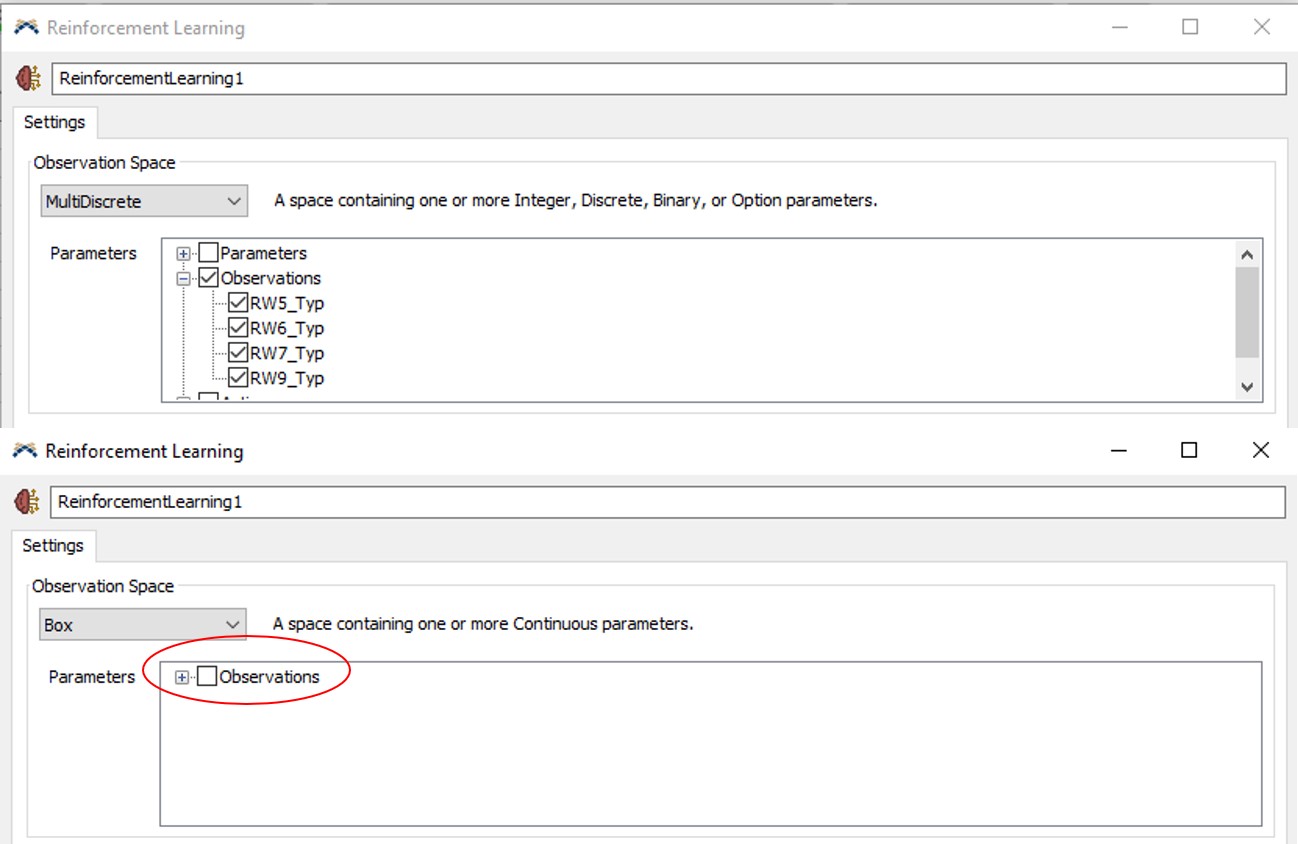Hallo everyone,
I want to use Reinforcement Learning to optimize a production schedule. My observation space contains parameters with the type "continuous" and "integer". When configuring the observation space in the RL tool, it is not possible to select both types of parameters.

Is there anyway to include mixed type parameters? I also do not want to change my integer parameters to continuous, because then information is lost. The model will then not convert the integer parameters to one-hot-encoded vectors which is a loss of information.
Can anyone help me out here? Thanks in advance
